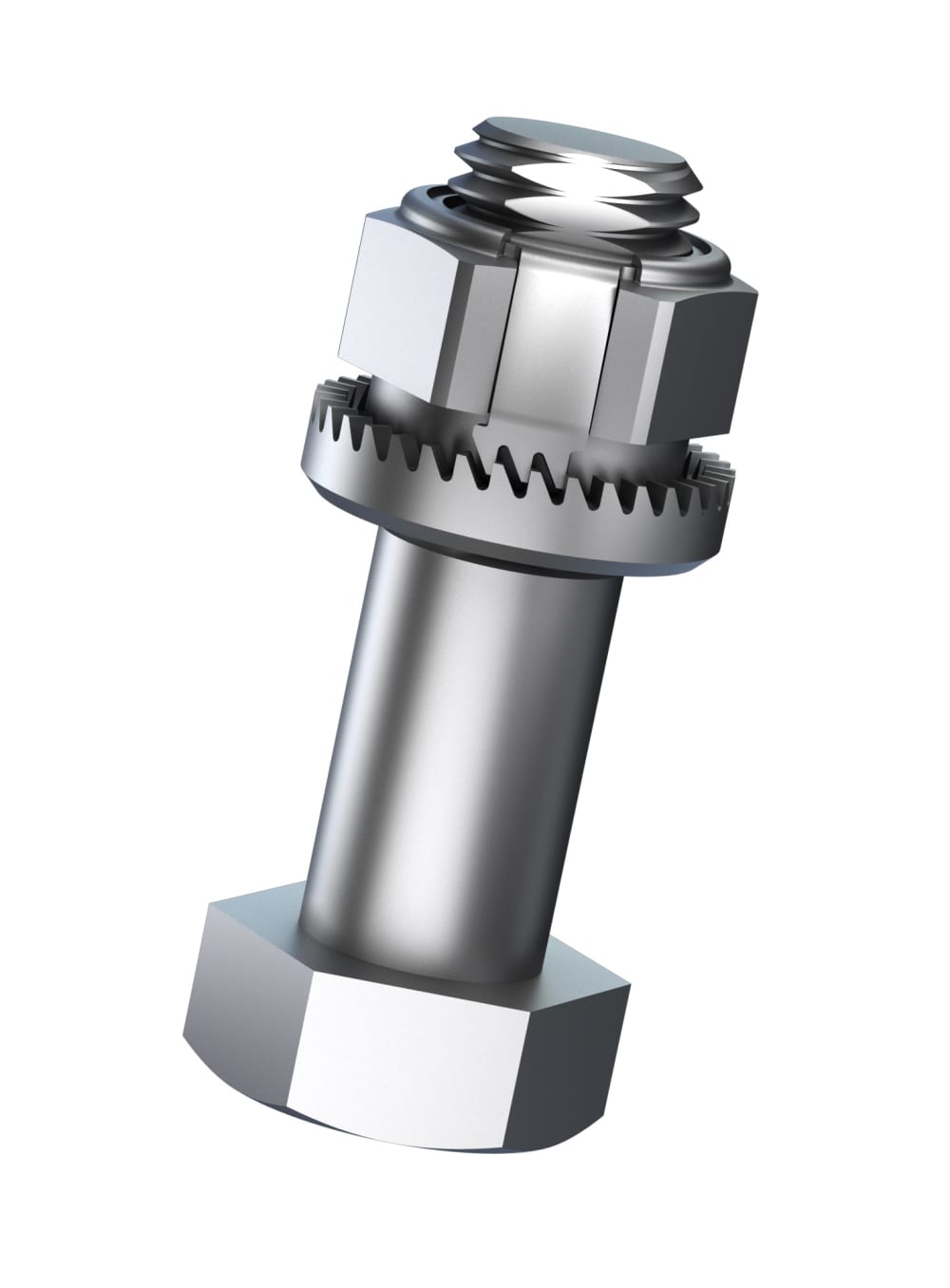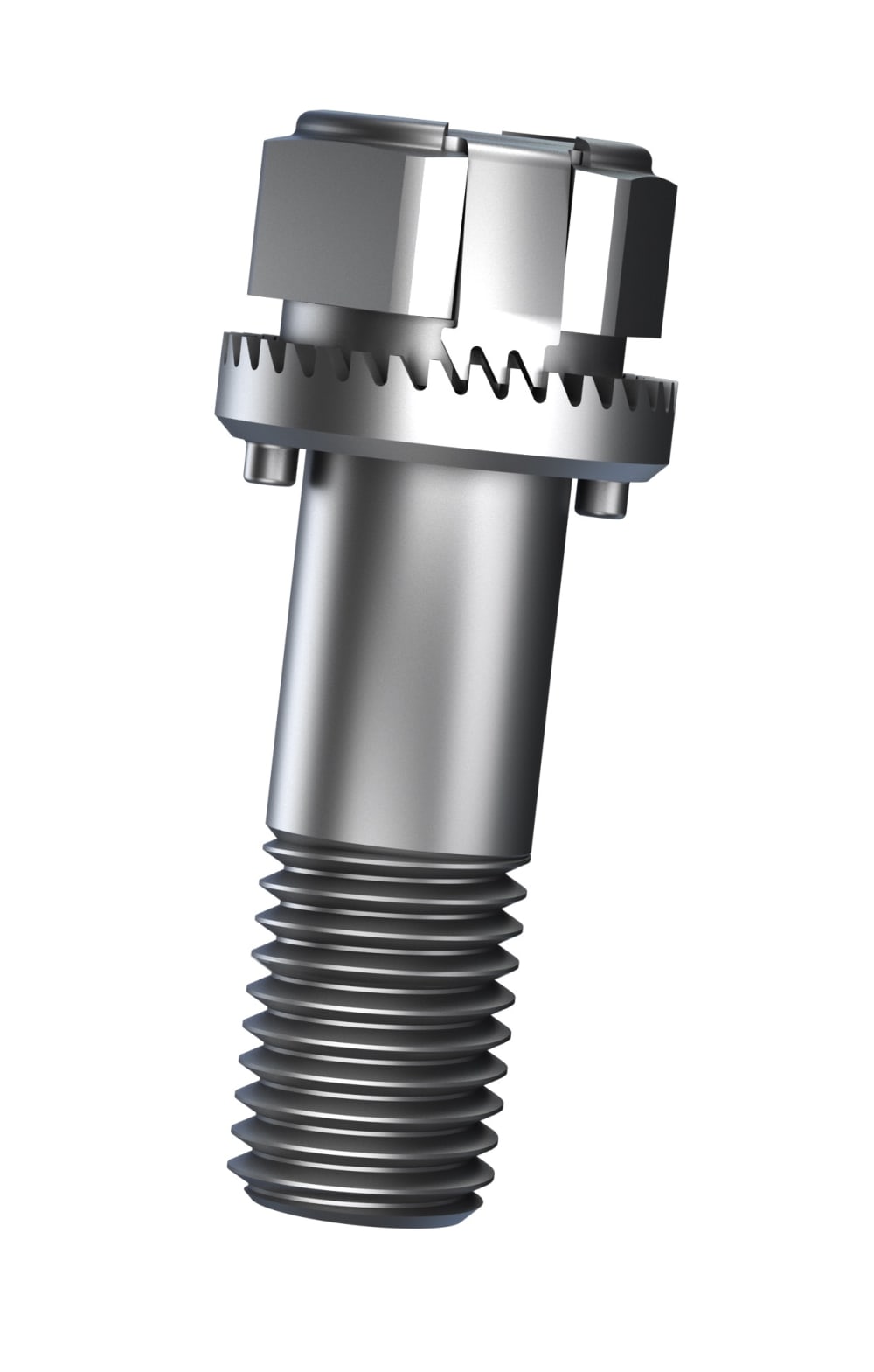

The Silver Lock fastener is a permanently locking, high vibration resistant fastener, that for maintenance is reversible and reusable. It employs a mechanical lock, which does not rely on friction. With the engagement of a standard 6-point socket, the fastener is free spinning, so an accurate preload can be applied. It is ideal for critical applications, as it remains locked even with total loss of preload. In aerospace, the requirement of a self-locking nut (NASM 1312-7) is to withstand 30,000 cycles of vibration. The Silver Lock fastener withstood 300,000 cycles of vibration without failure. It has also been cycled on and off 250 times. A key attribute of the fastener is that it reduces the time and cost of maintenance. In critical applications, a narrow range of torque will be spec'd for a desired preload. Current castle nuts only allow for 6 gradations of torque per revolution. If the mechanic applies a castle nut to the prescribed torque, and the slots do not align, the mechanic will try a different nut. With the Silver Lock, there can be 30 - 50 (depending on size) gradations of torque per revolution. This greatly improves the chances of success with the first torque application of the fastener. As all of the components of the fastener are metal, it is also ideal for applications in extreme environmental conditions.
The Silver Lock fastener is available in a locking bolt version and in a bolt-washer-nut version. In the latter, the bolt has 2 machined flats down to the root of the thread. The inner circumference of the washer has the same 2 flats, which constrain the washer in rotation, and there are circumferential teeth on the outer circumference of the washer. There is a spring attached to the nut that has teeth at the ends of arms. When these teeth engage the teeth of the washer, the nut is locked, as the washer cannot rotate due to the inner flats interfacing with the flats of the bolt. When a 6-point socket engages the nut, the arms of the spring are deflected inwards. This disengages the teeth and unlocks the fastener. As soon as the socket is removed, the teeth again engage, which permanently locks the fastener.
In the locking bolt version, the flats on the bolt and the washer are eliminated. Instead there are axial tabs on the washer that constrain the washer in rotation. Otherwise it functions in the same fashion as described above.
-
Awards
-
 2020 Aerospace & Defense Honorable Mention
2020 Aerospace & Defense Honorable Mention -
 2020 Top 100 Entries
2020 Top 100 Entries
Like this entry?
-
About the Entrant
- Name:Harold Hess
- Type of entry:teamTeam members:Harold Hess
Igor Komsitsky
Deeptesh Selvaraj
Zoltan Szekely - Software used for this entry:Simulia
- Patent status:pending





